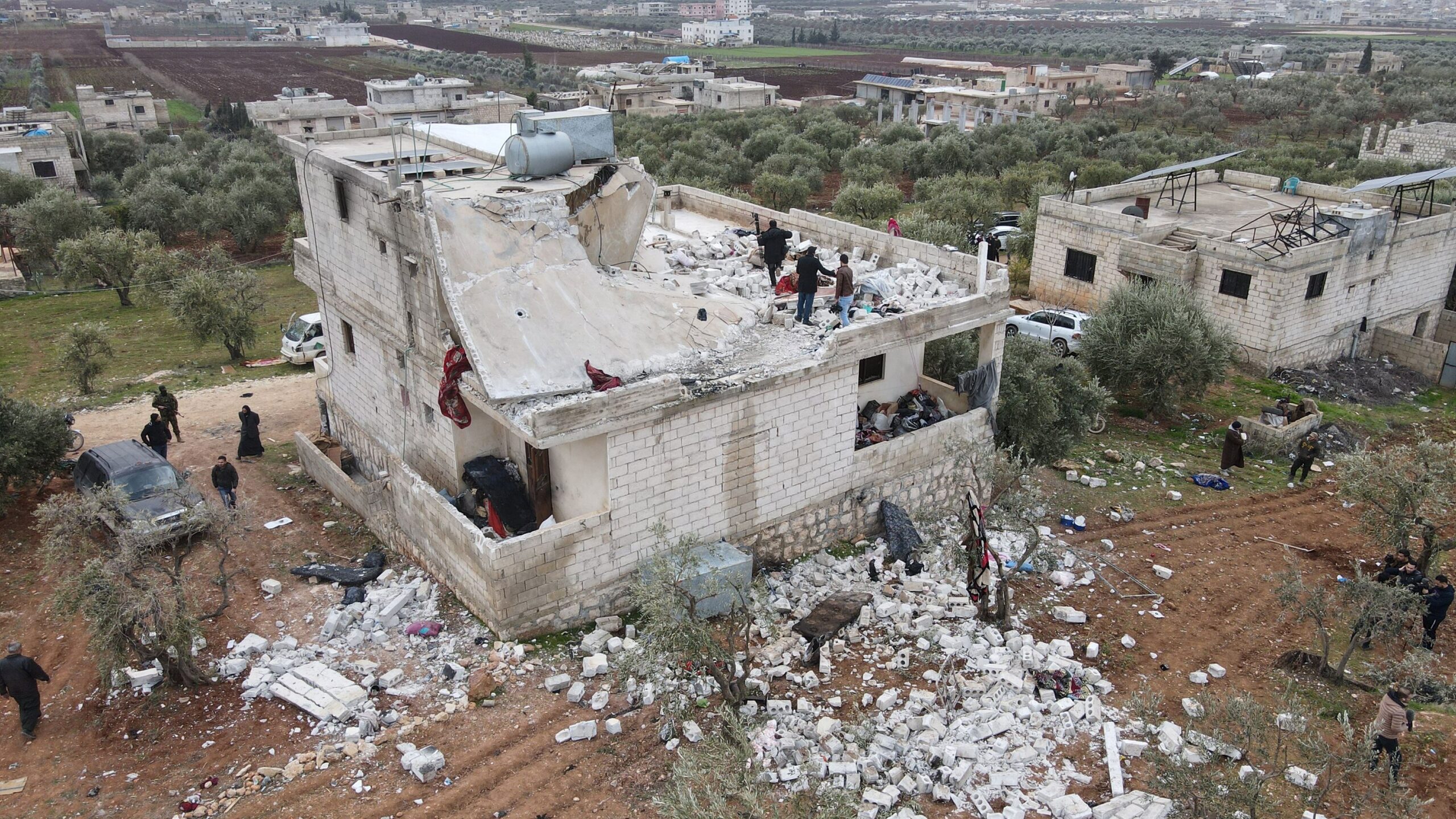
President Biden said on Thursday that the leader of the Islamic State died during a raid by U.S. Special Operations commandos in a risky pre-dawn attack in northwest Syria. Rescue workers said women and children were among at least 13 people killed during the raid.
In brief remarks at the White House, Mr. Biden said the choice to use Special Forces to target the ISIS leader, Abu Ibrahim al-Hashimi al-Qurayshi, was made to minimize civilian casualties, despite the greater risk to American troops.
Speaking in the Roosevelt Room at the White House, Mr. Biden was understated as he described the ISIS leader’s history, saying that he had ordered a series of atrocities, including against the Yazidi people. “Thanks to the bravery of our troops, this horrible terrorist leader is no more,” he said.
Mr. Biden said Mr. al-Qurayshi died when he exploded a bomb, killing himself and members of his family.
Mr. Biden said that the raid served as a warning to terrorist groups.
“This operation is testament to America’s reach and capability to take out terrorist threats no matter where they try to hide anywhere in the world,” he said.
Before his White House remarks, Mr. Biden said in a statement, “All Americans have returned safely from the operation.”
John F. Kirby, the Pentagon’s chief spokesman, addressed the casualties associated with the raid in a news conference on Thursday afternoon. “To the degree there’s loss of innocent lives, it’s caused by Abdullah and his lieutenants,” he said, using a nickname for Mr. al-Quaryshi. He said the U.S. forces were able to evacuate 10 civilians from the building, including several children.
Asked about the timing of the raid, which officials said was months in the planning, Mr. Kirby said multiple factors played a role: intelligence levels, certainty about the ISIS leader’s location, weather and operational conditions (it was a virtually a moonless night, ideal for night operations).
“A lot of factors had to line up to be just right,” said Mr. Kirby. “This was the best window to execute the mission.”
The helicopter-borne assault was carried out by about two dozen American commandos, backed by helicopter gunships, armed Reaper drones and attack jets. The operation resembled the raid in October 2019 in which Abu Bakr al-Baghdadi, the previous leader of the Islamic State, died when he detonated a suicide vest as U.S. forces raided a hideout not far from where Thursday’s operation took place.
The operation came days after the end of the largest U.S. combat involvement with the Islamic State since the end of the jihadists’ so-called caliphate three years ago. American forces backed a Kurdish-led militia in northeastern Syria as it fought for more than a week to oust Islamic State fighters from a prison they had occupied in the city of Hasaka.
Little is known about Mr. al-Qurayshi, who succeeded Mr. al-Baghdadi, or about ISIS’s top command structure. But analysts said the death of the Islamic State leader was a significant blow to the terrorist group.
U.S. helicopters ferried the commandos into position after midnight, surrounding a house in Atmeh, a town close to the border with Turkey in rebel-held Idlib Province, according to eyewitnesses, social media reports and the Syrian Observatory for Human Rights, a conflict monitor based in Britain.

Detail area
A tense standoff ensued, with loudspeakers blaring warnings in Arabic for everyone in the house to surrender, neighbors said. Then an explosion rocked the building. After that, some of the house’s occupants had not emerged and a major battle erupted, with heavy machine gun fire and, apparently, missile strikes.
During the operation, one of the American helicopters suffered a mechanical problem, was forced to land and was later destroyed by American attack aircraft. After about three hours, the American commandos and their remaining helicopters flew off, witnesses said.
Given the fluid nature of early reports in a complex raid like Thursday’s operation, the military’s initial version may be incomplete. Accounts of other events have at times turned out to be contradictory or sometimes flat wrong.
Reporting was contributed by Falih Hassan, Muhammad Najdat Hij Kadour, Asmaa al-Omar, Hwaida Saad and Evan Hill. John Ismay




